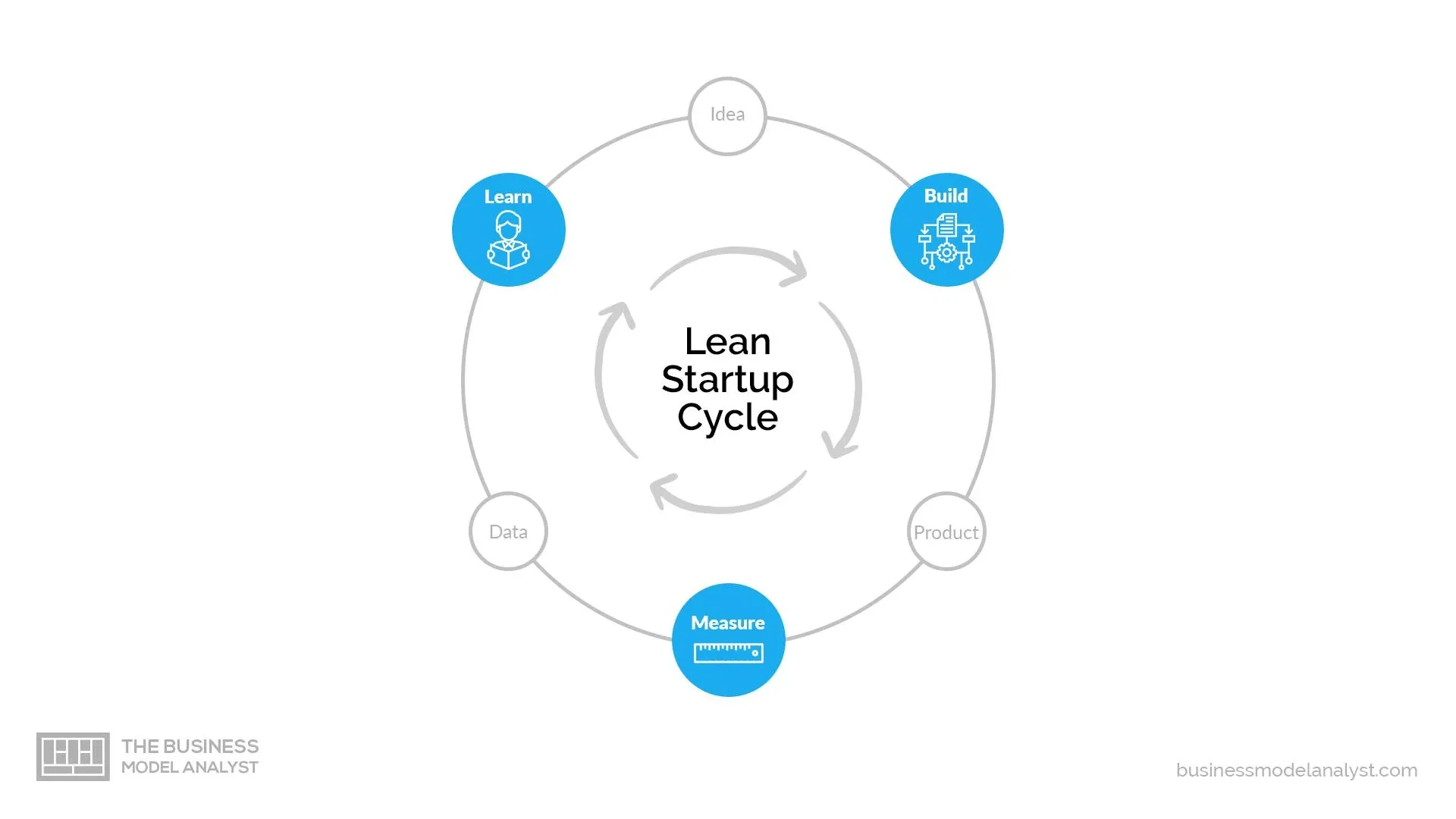The Entrepreneur's Guide to Lean Startup

The business landscape is rapidly evolving, and the old methods of developing products are becoming outdated. Enter the Lean Startup—a methodology that has revolutionized how new businesses and products come to life. By emphasizing customer feedback, rapid iteration, and a scientific approach to testing ideas, the Lean Startup method helps entrepreneurs create value while minimizing waste.
If you're an entrepreneur looking to get started, or simply curious about how to build a business with fewer risks and greater chances of success, this guide will provide you with an in-depth understanding of Lean Startup and how to apply it. Lean principles can be particularly helpful when exploring the next big startup idea, ensuring that you validate your concept with real customer input and increase your chances of success.
What is Lean Startup?
The Lean Startup is a methodology for developing businesses and products that aims to shorten product development cycles, validate learning, and adapt to customer needs quickly. It was developed by Silicon Valley entrepreneurs Steve Blank and Eric Ries in the early 2000s. Instead of spending years on business plans and market research, the Lean Startup advocates for a more agile and experimental approach that involves getting products into customers' hands quickly and iterating based on feedback.
Why Lean Startup Matters
In traditional startups, the risk is immense. Entrepreneurs invest countless hours and resources into developing products only to discover, post-launch, that the market doesn't need them. The Lean Startup approach aims to de-risk entrepreneurship by providing a framework to validate assumptions, gather data, and pivot as necessary—making it easier to adjust the course early when necessary.
Core Principles of Lean Startup

1. Build-Measure-Learn Feedback Loop
At the heart of Lean Startup is the build-measure-learn feedback loop. This process emphasizes starting with an idea, building a basic version of the product (the Minimum Viable Product), measuring how customers respond, and learning from the data collected. The insights gained help shape the next iteration of the product.
- Build: The focus is on building a version of your idea quickly—an MVP—that can be tested with real users.
- Measure: Collect quantitative and qualitative data from your users. How are they interacting with your MVP? What challenges are they facing?
- Learn: Use the data to understand what customers really need and whether your assumptions were correct. This helps in refining the product or even making major changes.
2. Validated Learning
Validated learning is another core concept of Lean Startup. It's a systematic way to prove or disprove hypotheses using real customer data rather than relying on intuition or assumptions. By interacting with real customers, entrepreneurs can test the foundational assumptions about their business model, product features, customer pain points, and the overall value proposition.
3. Minimum Viable Product (MVP)
An MVP is the simplest version of a product that allows an entrepreneur to collect the maximum amount of validated learning about customers with the least effort. The goal of the MVP is not to offer a perfect solution but to get it into customers' hands quickly to understand whether it meets their needs.
MVPs can take many forms—from simple mockups, landing pages, or even a basic prototype. It's about building just enough to get valuable feedback that informs future development.
Customer Development and Hypothesis Testing

1. Customer Discovery
In Lean Startup, the goal is to thoroughly understand your customers before investing heavily in building a product. This process, known as customer discovery, involves interviews, surveys, and observations. By interacting directly with potential customers, entrepreneurs can gather deep insights into customer needs and problems.
Customer Discovery in Action: For example, if you have an idea for a meal subscription service, you could begin by interviewing potential customers about their eating habits, pain points in meal preparation, and what they’d find most valuable. Understanding your audience is the first step in ensuring you are solving a problem they care about.
2. Formulating and Testing Hypotheses
The next step is to take what you learn from customer discovery and formulate clear hypotheses about the product or service you’re offering. For example:
- "Busy professionals will pay a premium for meal kits that can be prepared in under 10 minutes."
Once you have a hypothesis, you can build an MVP to test it. The MVP could be a simple prototype or a basic webpage outlining the concept. The key is to collect data and adjust based on the feedback.
Iteration and Pivoting

Continuous Iteration
Lean Startup is an iterative process—it doesn’t end after one build-measure-learn loop. You continue iterating, testing new versions of your product, refining features, and making improvements based on customer feedback.
Iteration Example: Imagine a mobile app designed to help users meditate. Initially, the app may only include a few basic guided meditations. But after receiving feedback, you discover that users want personalized recommendations based on their progress. You would iterate by adding features that cater to these needs.
Pivoting
Sometimes, the feedback you receive is more than just helpful tweaks—it shows that your initial assumptions were wrong. In such cases, a pivot may be necessary. A pivot is a fundamental change in your product or business strategy based on your learnings.
Pivots could include changing the target audience, focusing on different features, or even transforming the entire business model. Successful pivots allow a business to adapt rather than fail.
Measuring Success with Actionable Metrics
Actionable vs. Vanity Metrics
Metrics play an essential role in helping you determine whether your Lean Startup is on the right track. It's crucial to differentiate between actionable metrics and vanity metrics.
- Vanity Metrics: Numbers that look good on paper but don’t provide insights that drive decisions. Examples include social media followers or app downloads without active engagement.
- Actionable Metrics: These are data points that can inform your next actions. Examples include:
- Customer Acquisition Cost (CAC): How much does it cost to gain each new customer?
- Churn Rate: What percentage of users stop using your product after a certain period?
- Lifetime Value (LTV): How much revenue do you earn from a customer over their relationship with your business?
Benefits of the Lean Startup Approach
Reduced Risk
The Lean Startup approach helps mitigate risk by testing assumptions early. Instead of launching a fully developed product and hoping for the best, you’re constantly validating your ideas, ensuring there's demand for what you're offering.
Cost-Effectiveness
Lean Startup allows you to avoid significant upfront costs by focusing on building MVPs. With a lean approach, you can validate a product idea without the massive expense typically associated with full product development.
Adaptability
In the fast-paced business environment of today, adaptability is critical. The Lean Startup method equips companies with a structured way to iterate quickly and pivot if necessary—ensuring that they keep evolving as customer needs change.
Implementing Lean Startup in Your Business

To successfully implement Lean Startup principles, it's essential to follow a structured process:
Step 1: Identify and Prioritize Customer Needs
Your first step should be to thoroughly understand the pain points your potential customers experience. Spend time conducting interviews, sending out surveys, and immersing yourself in the customer’s environment to gather data.
Step 2: Develop a Minimum Viable Product (MVP)
After understanding your customers, design an MVP to address their needs. The MVP should focus on solving a core problem with minimum features that are just enough to get customer feedback.
Step 3: Collect Customer Feedback
Deploy your MVP and collect data from actual customers. Ask open-ended questions to understand what they liked, what didn’t work, and what they expected but didn’t receive. Analyze how users are engaging with the MVP and what metrics indicate satisfaction or dissatisfaction.
Step 4: Iterate and Improve
With the feedback in hand, refine your MVP, and add features that customers value most. Remove elements that aren't helping or are creating friction. This continuous process of building, measuring, and learning helps the product evolve to meet market needs.
Step 5: Know When to Pivot
If your customer feedback suggests that the fundamental assumptions about your product or market are incorrect, it may be time to pivot. This means making a significant change to your product strategy—whether that’s shifting your target audience, changing features, or altering your revenue model.
Challenges and Pitfalls of Lean Startup
While the Lean Startup methodology has many benefits, it is not without challenges:
Overemphasis on Speed
In the pursuit of getting an MVP out fast, entrepreneurs may sometimes compromise on quality. While the MVP should be minimal, it must still function well and deliver the promised value.
Defining the Right Metrics
It’s easy to fall into the trap of tracking vanity metrics that do not provide meaningful insights. Defining what truly matters for your product’s growth is crucial to effective decision-making.
Resistance to Change
Established organizations often find it hard to embrace Lean Startup principles due to ingrained processes and risk aversion. Shifting a corporate culture to support experimentation, failure, and iterative learning can be a major hurdle.
Lean Startup in Action: Real-World Applications
Lean Startup principles can be applied right from the beginning of your entrepreneurial journey. For instance, when exploring the next big startup idea, adopting a lean approach helps ensure that you validate your concept with real customer input, increasing your chances of success.
To illustrate the success of Lean Startup principles, consider several well-known examples of companies that have implemented these methodologies to great effect:
- Tech Startups: Many successful technology companies use Lean Startup methods to launch new features and products iteratively. By putting out MVPs, gathering feedback, and scaling as needed, these companies have minimized their risks.
- E-commerce Business: Entrepreneurs launching e-commerce businesses can start by validating their concept with a simple online store offering limited products. Using tools like the Business Model Canvas, they can sketch out how their business will create and deliver value and use lean practices to develop it iteratively.
Implementing Lean Startup in Your Startup Idea
Lean Startup principles are perfect for new ideas where the market is untested, and customer needs are unclear. Whether you’re working on the next big startup idea or simply exploring a new business venture, taking a lean approach will help you get closer to your potential customers and find out if your solution is what they actually need.
If you already have a one-page business plan using tools like a Lean Canvas, the Lean Startup approach helps you test the core assumptions listed in the plan, ensuring you only invest more resources after initial validation.
Conclusion: Why Lean Startup Matters
Lean Startup provides entrepreneurs with a systematic way to navigate the uncertainties of building new products and businesses. By emphasizing validated learning, quick iteration, and constant customer involvement, it reduces the risk of building something nobody wants.
Lean Startup is not just for startups—it’s for anyone looking to innovate. The process provides a framework that keeps the customer at the core of product development, ensures adaptability, and helps businesses thrive in a competitive market. So, whether you're an entrepreneur or an innovator in a large organization, adopting the Lean Startup approach can help you build, measure, and learn your way to success.



